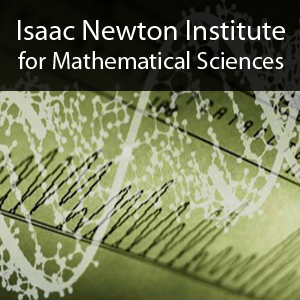Cis-regulatory SNPs (cis-rSNPs) altering transcription detected by allelic expression (AE) mapping
Duration: 34 mins 39 secs
Share this media item:
Embed this media item:
Embed this media item:
About this item

| Description: |
Pastinen, T (McGill University)
Friday 16 July 2010, 09:30-10:00 |
|---|
| Created: | 2010-07-20 16:01 | ||
|---|---|---|---|
| Collection: | Statistical Challenges Arising from Genome Resequencing | ||
| Publisher: | Isaac Newton Institute | ||
| Copyright: | Pastinen, T | ||
| Language: | eng (English) | ||
| Distribution: |
World
|
||
| Credits: |
|
||
| Explicit content: | No | ||
| Aspect Ratio: | 4:3 | ||
| Screencast: | No | ||
| Bumper: | /sms-ingest/static/1280x960-4x3-sms-bumper.mp4 | ||
| Trailer: | /sms-ingest/static/1280x960-4x3-sms-trailer.mp4 | ||
| Abstract: | Up to 30% genes in CEU LCLs1 reveal cis-rSNPs using genome-wide AE mapping in primary transcripts. If multiple tissues are studied additional common cis-rSNPs are detected, e.g. in three human cell types ~50% of genes harbor functional variants governing >50% of population variance in cis-regulation. Tissue independent and tissue-specific cis-rSNPs have a characteristic distribution, with enrichment to proximal (<15kb of transcript) or distal (>30kb of transcript) regulatory elements, respectively. One approach to isolate causal cis-rSNPs includes integrative analysis of AE-mapping data, 1000 Genomes and wgENCODE data. In CEU and YRI LCLs we localized cis¬-rSNPs to fewer than five candidates for 570 genes. Fine-mapped cis-rSNPs are enriched (5-10x) in regulatory elements (wgENCODE) and show predominant localization to 5’ TSS allowing validation by reporter gene assays. Ubiquitous nature of cis-rSNPs detected by AE provides opportunities to understand gene regulation at single base resolution. Recent surge in RNA-seq. and ChIP-seq. data, both with intrinsic allele-specificity, can now be used in parallel to study how and where cis-rSNPs act. Early comparison of AE-mapping to RNA-seq. data2 observed 55% overlap of eQTLs by RNA-seq. with cis-rSNPs detected by AE, but a lower proportion of cis-rSNPs detected by AE yielded positive eQTL signal in RNA-seq. On-going work is targeted to clarify how differences in relative sensitivity to transcriptional vs. RNA-processing related changes explain the discordance as well as to provide estimation of the proportion attributable to spurious or false negative associations to guide on design of optimal cis-rSNP mapping studies. Combining allele-specific ChIP data with AE fine-mapping allows understanding of mechanistic basis of cis¬-rSNP action3 and emerging genome-wide allele-specific ChIP-seq. datasets4 should allow for global integrative analyses. The prospect of developing genome-wide maps of causal cis-rSNPs using NGS and other allele-specific techniques will be discussed in light of these results. 1Ge B. et al., Nature Genet., 2009 2Pickrell J. et al., Nature, 2010 3Verlaan D.J. et al., AJHG, 2009 4McDaniell R. et al., Science, 2010 |
|---|---|
Available Formats
| Format | Quality | Bitrate | Size | |||
|---|---|---|---|---|---|---|
| MPEG-4 Video | 480x360 | 1.84 Mbits/sec | 479.25 MB | View | Download | |
| WebM | 480x360 | 494.01 kbits/sec | 125.43 MB | View | Download | |
| Flash Video | 480x360 | 567.88 kbits/sec | 144.47 MB | View | Download | |
| iPod Video | 480x360 | 505.39 kbits/sec | 128.57 MB | View | Download | |
| QuickTime | 384x288 | 849.06 kbits/sec | 216.00 MB | View | Download | |
| MP3 | 44100 Hz | 125.02 kbits/sec | 31.61 MB | Listen | Download | |
| Windows Media Video | 479.38 kbits/sec | 121.95 MB | View | Download | ||
| Auto * | (Allows browser to choose a format it supports) | |||||

